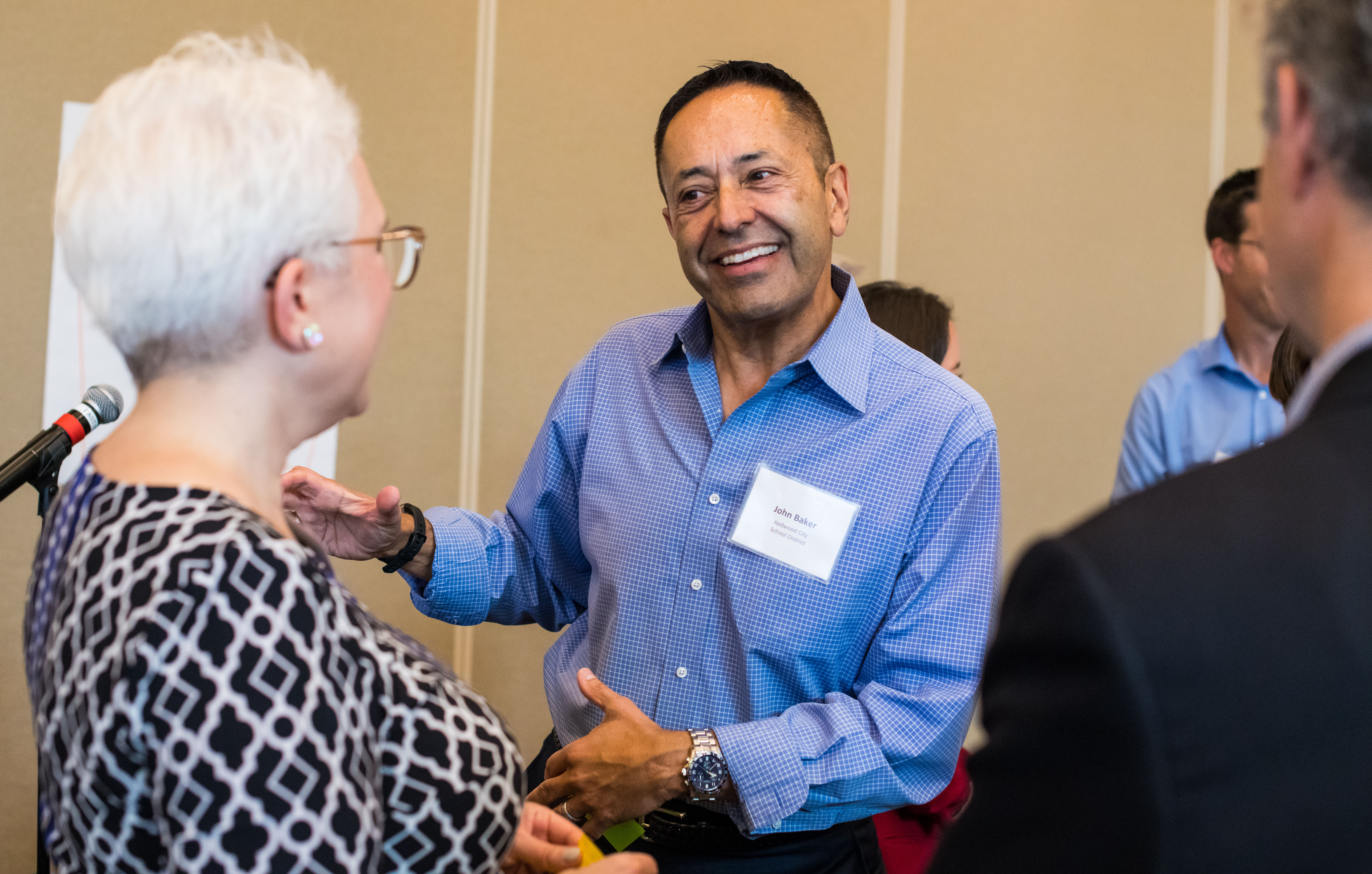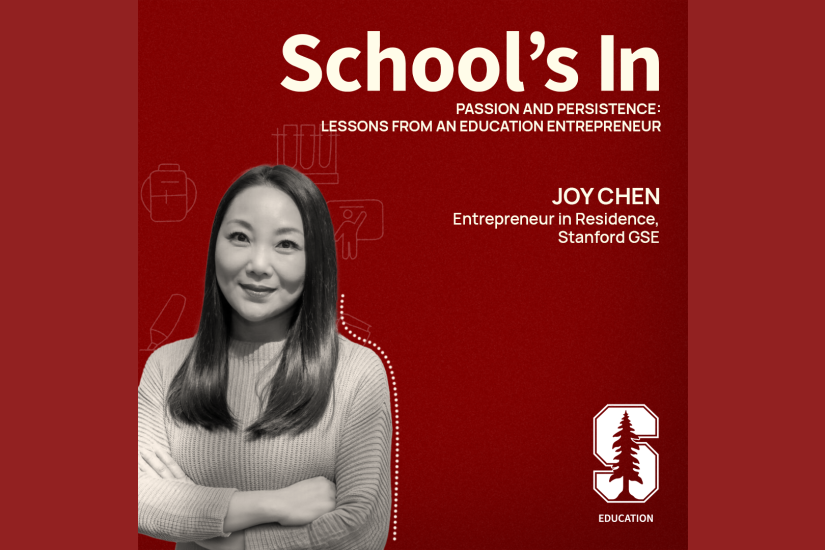
Stanford launches research collaborative with nine local school districts
Why do some students whose primary language is not English struggle more than others to thrive in U.S. schools? What kinds of programs and policies could narrow the achievement gap between these students and their peers—and how can teachers who have very few English learners meet the needs of all of the students in their class?
To help answer these and other questions about the experience of English learners, Stanford Graduate School of Education (GSE) has launched a groundbreaking research partnership with nine neighboring school districts that collectively serve more than 30,000 students in kindergarten through high school.
The Stanford-Sequoia K-12 Research Collaborative connects GSE scholars with school leaders in southern San Mateo County to research challenges the districts are facing around educating English learners (ELs).
The initiative builds on the GSE’s decade-long partnership with the San Francisco Unified School District, where dozens of research projects are now in progress.
“To solve the greatest challenges in education, we need to be able to bring research more effectively into practice,” said Dan Schwartz, the I. James Quillen Dean and Nomellini & Olivier Professor of Educational Technology at the GSE. “These partnerships are one way to do that. They not only bring research, they also bring researchers. Education is a people business.”
Bridging historic gaps

In California, 21 percent of public school students are English learners, according to the National Center for Education Statistics. In the districts participating in the collaborative, students’ primary languages include Spanish, Mandarin, Cantonese, Filipino, Vietnamese, Hmong and Russian.
The students come from a variety of family backgrounds, including Latino and east Asian immigrants, visiting Stanford scholars and Silicon Valley engineers.
“Some of the districts have large numbers of English learners, and some have just a handful,” said Amy Gerstein, Executive Director of the GSE’s John W. Gardner Center for Youth and Their Communities, a research partner in the Stanford-Sequoia collaborative. “The characteristics are really different, but all of the districts are dealing with issues around English learners.”
Researchers at the Gardner Center are collecting a decade’s worth of data on every student in the nine districts, building a massive archive that charts key indicators such as attendance and GPA as students move from elementary to high school.
The database will bridge historic gaps in knowledge about the students’ progress from one level of schooling to the next: For the first time, outcomes will be tracked across the years.
“It’s an enormous opportunity to follow the kids from elementary into high school,” Gerstein said. “What are their learning patterns? What are the different factors that seem to be predictive of their success? What does their trajectory look like over time?”
School officials say the data archive could also widen their own view of that trajectory. “A student’s designation as English-proficient for certain placements in ninth grade shouldn’t be considered the finish line,” said Michael Milliken, PhD ’05 and superintendent of the Belmont-Redwood Shores School District, one of the eight K-8 districts in the collaborative.
“For us, having a sense of our students’ high school graduation rates and college preparation shows us where we’re having success and where we’re not,” he said. “We’re able to see where we may need to intervene more purposely.”
Initial research projects
In addition to creating the database, the collaborative has several research projects underway that are focused on specific topics affecting ELs. One project, led by GSE Associate Dean and Professor Shelley Goldman, looks at ways to apply design thinking strategies to support teachers in classrooms with few ELs. Another, led by GSE professors Guadalupe Valdés and Guillermo Solano-Flores, explores the challenges of properly identifying, assessing and supporting students who have been categorized as long-term English learners (LTELs) as required by California and federal policy.
“There’s a fine line between support and marginalization,” said Valdés. “My hope is that we’ll be able to provide for schools a clearer idea of where that line might be. Are there better assessment instruments they could use? What are the instructional solutions that are now in play, and how effective are they for different students?”
Five GSE faculty, four doctoral students and numerous staff from two GSE research centers are involved in the collaborative. Preliminary research has helped focus and deepen the study inquiries this year, and researchers hope to begin sharing findings more widely in 2019.
“There’s a fine line between support and marginalization. My hope is that we’ll be able to provide for schools a clearer idea of where that line might be."
—Guadalupe Valdés, professor at Stanford Graduate School of Education
The vulnerability of sharing data
For the superintendents—most of whom have collaborated with one another but not in a sustained, systemic way—the experience of participating in the collaborative goes beyond coalescing around best practices.
“There’s real potential here to develop more of a system across these nine districts, to knit us together a little more neatly,” said Milliken. The work could redirect and strengthen the districts, he added, “so that we’re not just coordinating and working together better, but that we’re collectively more capable.”
In an era of increasing accountability, Gerstein noted, it takes courage for school administrators to share their data.
“It’s a very public process,” she said. “The districts took risks putting their findings out there for the whole collaborative to see.” (Data are shared in the aggregate, Gerstein said, to protect student confidentiality.)
Districts drive the research agenda
The research questions are driven by district priorities. The theme of supporting English learners emerged over the past two years during a set of convenings led by staff at California Education Partners, a nonprofit established by the Silver Giving Foundation to promote collaboration among school systems throughout the state.
California Education Partners coordinates both the Stanford-Sequoia Collaborative and the Stanford-SFUSD Partnership.
“A key piece of the research-practice partnership is the act of creating and working on the research projects together,” said Michelle Nayfack, associate director of research-practice partnerships at California Education Partners. “The districts want to make research-driven decisions, but they often need research support that feels closely connected to their specific problems of practice.”
The collaboration has been a learning experience for both school personnel and researchers, said Solano-Flores.
“I’ve always worked with schools and teachers, but never in the context of a partnership, which has a higher level of formality, commitment and coordination,” he said. “We have to understand their needs, what they want to know, what challenges they’re facing—and they need to also understand the kinds of things we [researchers] are able or not able to do in a relatively short time.”

Mary Streshly is superintendent of the Sequoia Union High School District, one of nine school districts participating in the Stanford-Sequoia K-12 Research Collaborative. (Photo: Phil Halperin)
Participants in the collaborative expect the research will benefit schools throughout California and beyond, even as the superintendents appreciate the particular relevance to their own system.
“In education we don’t always have the luxury of basing our decisions on deep program evaluation,” said Mary Streshly, superintendent of the Sequoia Union High School District. “It’s usually more anecdotal, as opposed to a structured study. Or we’re looking at research on what we’d consider a similar school somewhere else, like New York City.”
Having sound research guided by their own programs and questions, she said, is unusual and valuable. “The researchers have been very flexible in drilling down to our exact needs.”
The effort to serve the districts’ particular needs is something the GSE is working to institutionalize, said Nayfack.
“There’s a nice history at the GSE of hiring faculty who want their research out in the public sphere,” she said. “There’s a culture of wanting it to matter.”



